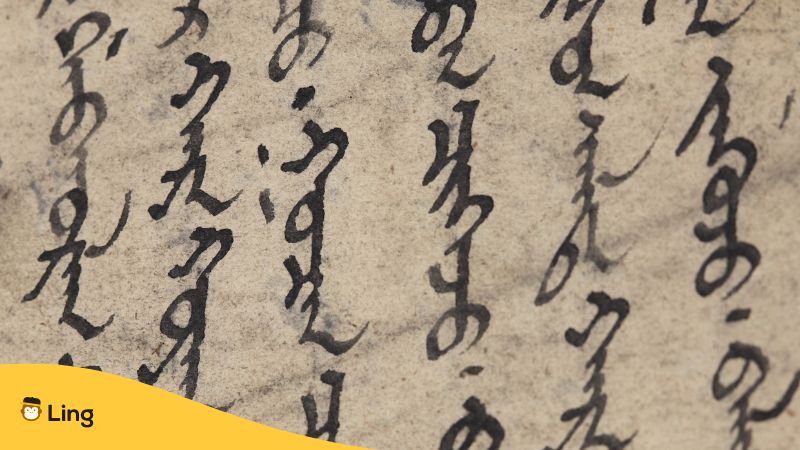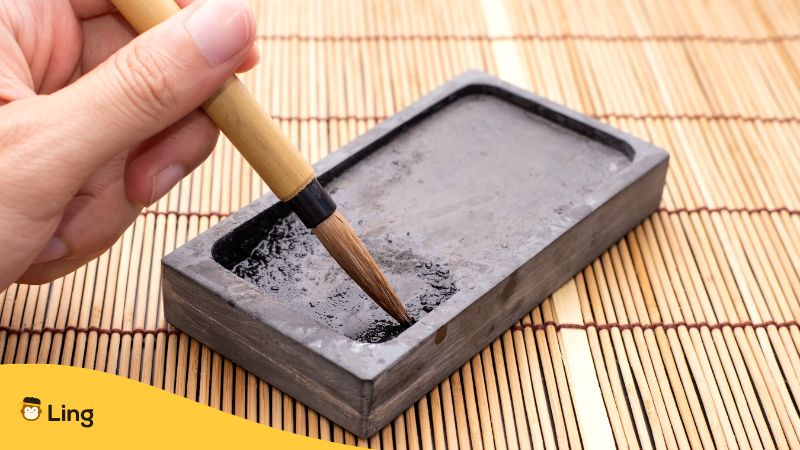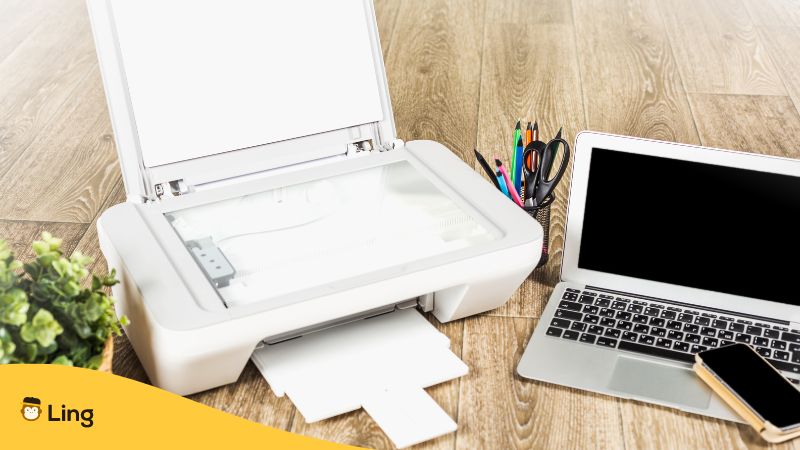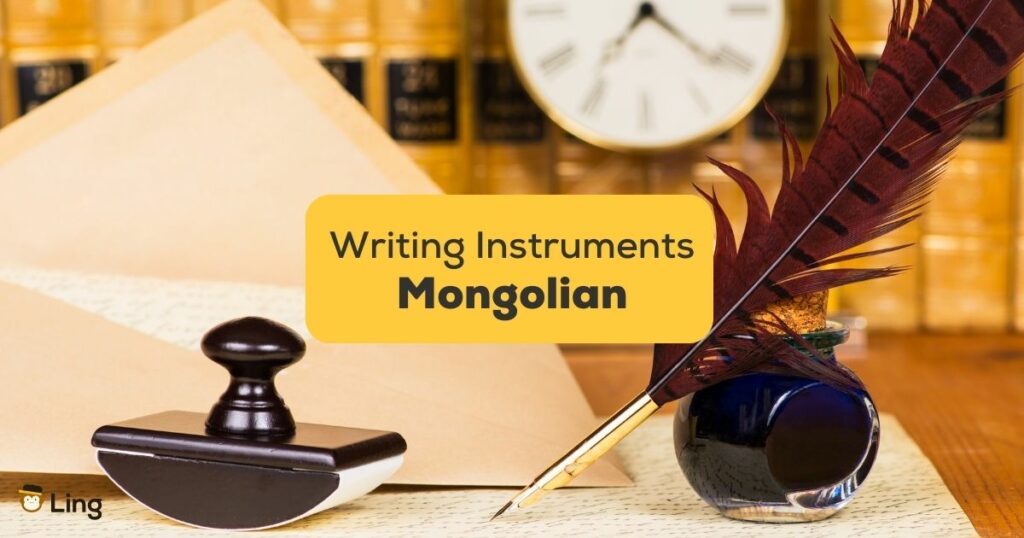Get ready to embark on a linguistic safari through the exotic landscape of Mongolian words for writing instruments! In this mini-adventure, we’ll uncover the quirky, fascinating, and sometimes downright magical terms Mongolian speakers use to describe their pens, paper, and other scribble-worthy tools.
In this article, we will enter a time machine (well, kind of) because we are going to talk about what Mongols used for writing in the past up until today—let’s also add a dash of the Mongolian writing system. Let’s dive in and discover the Mongolian language with Ling!
Significance Of Writing
Writing is an act that is more significant than major logistic companies in the whole world! Why? Because it has delivered myriads of information—from the past to the present. Image this: Without written works, we would never be able to know what Abraham Lincoln did centuries ago in detail as we know it today. It delivered that very event, especially his ideas and millions of people’s! Another thing is that it’s a refrigerator that preserves the scrumptious and amazing dishes of the past. Amazing, right? Writing is a fascinating tool more than what we can imagine.
But here is the thing: we know that each nation has its own way of writing. So, what, then, is the writing that the Mongolians used before? Following that question, what are they using today?

Mongolian Script
Let us quickly take a look at the Mongolian writing system and how it evolved over time.
Classical Mongolian Script
Imagine there was a special way of writing, like how you write your ABCs, but it was made just for the Mongolian language. This traditional or classical Mongolian script is called “Хуудм Моңһл бичг” (Khuudm Moňhl bichig). This type of writing in ancient Mongolia is nothing like what we use today. They wrote from top to bottom—imagine a waterfall but with writing. This special way of writing was the main one they used in Mongolia for a very long time until they started using a different way called Cyrillic in 1946.
Modern Mongolian Writing System (Cyrillic Alphabet)
Mongolian Cyrillic is an alphabet that was borrowed from Russian in the 1940s. Yep, they are identical. But guess what? They added two extra letters to it! One looks like “Өө” (sounds like “ur” in “burn” without the “b”), and the other looks like “Үү” (sounds like “u” in “rude” without the “r”).
What’s more, is that the direction of their writing is now from left to right (unlike the ancient Mongolian script). In fact, every translation that you will see in this article is written in the Mongolian Cyrillic alphabet!
Okay, now that we are done with its writing system, let us tackle the instruments that the Mongols used for writing.
Mongolian Words For Writing Instruments: Traditional
Let’s learn the ancient writing instruments that the Mongols used for writing their beautiful Mongolian calligraphy, as well as necessary pieces of information like official letters, for example.
Reed Pen – Zegs üzeg (Зэгс үзэг)
These pens are made of wood, reeds (the most common), bamboo, and even metals like bronze or iron. This is the main instrument that the Mongols used back then. However, things took a turn with the arrival of brushes in the scene in the 18th century. Since then, the usage of reed pens declined.

Brush – Soiz (Сойз)
With the arrival of brushes in the writing scene, they became famous not only in Mongolia but in other parts of Asia, too, such as Japan and China. In fact, brushes proved to be useful as they are also used in the field of arts. A reliable and versatile instrument, indeed!
Ink – Bekh (Бэх)
Of course, writing with pens or brushes is impossible without ink.
For inks, they had two main colors from a single source: black and red cinnabar. Cinnabar is a mineral related to volcanic activity. Amazing, right? To be honest, I thought that inks could only come from squids. What a shame.
Anyway, this means that when they wanted to write something important or special, they used ink that was either black or a vibrant cinnabar red—depending on their preference and availability, perhaps.
Paper – Tsaas (Цаас)
Now, here’s where it gets interesting: They didn’t just write on paper like we do today. They used all sorts of things as their “paper.” They wrote on thin pieces of tree bark called birch bark, on regular paper like we use now, on soft materials made of silk or cotton, and even on hard surfaces like wooden or shiny silver plates.
Nevertheless, they mainly used either paper or bark. But of course, paper was very expensive in the past. Thankfully, when paper became more economical in the 19th century, it became the mainstream writing instrument for everyone. No more tree barks, I guess.
More Traditional Mongolian Words For Writing Instruments
| English | Mongolian | Romanization |
|---|---|---|
| Parchment | Илгэн цаас | Ilgen tsaas |
| Quill | Квилл | Kvill |
| Inkwell | Бэхний сав | Bekhnii sav |

Mongolian Words For Modern Writing Instruments
Fast-forward, writing became very, very accessible. It is astonishing that we can now write even without a quill, an inkwell, bark, or a brush. Let us look at the modern writing instruments in Mongolian words.
| English Translation | Mongolian Word | Romanization |
| Computer | Компьютер | Kompyuter |
| Keyboard | Гар | Gar |
| Smartphone | Смартфон | Smartfon |
| Stylus | Зүүг | Züüg |
| Printer | Принтер | Printer |
| Ballpen | Бөмбөг | Bömbög |
| Gel Pen | Гель үзэг | Gyeli üzeg |
| Pencil | Харандаа | Kharandaa |
| Crayons | Өнгийн харандаа | Öngiin Kharandaa |
| Notebook | Тэмдэглэлийн дэвтэр | Temdegleliin Devter |
| Journal Notebook | Сэтгүүлийн дэвтэр | Setgüüliin Devter |
| Marker | Тэмдэглэгч | Temdeglegch |
| Permanent Marker | Байнгын тэмдэглэгээ | Baingyn Temdeglegee |
| Chalk | Шохой | Shokhoi |
| Whiteboard | Цагаан самбар | Tsagaan Sambar |
| Sticky Notes | Наалттай тэмдэглэл | Naalttai Temdeglel |
Amazing how writing went from a tree bark with a reed pen up to writing with just a smartphone. Moreover, in these modern times, writing can be duplicated effortlessly with a printer! No matter the mode of writing, its essence remains the same. This practice made everything that we now enjoy possible because it preserved the very soul and reason why we write: knowledge through language.
Learn Mongolian With Ling!
Did you enjoy this article about the Mongolian language? Well, do not miss out on many more of Ling’s Mongolian lessons! Check out simple Mongolian words to read, Mongolian adverbs, and common Mongolian adjectives to fuel the fire of your interest in learning Mongolian!
But what if I tell you that the Ling app also offers personal yet very accessible lessons in learning Mongolian? Yes, you’ve read that right! Learn a language at your own pace, enjoy a fun approach to learning, engaging content, and more with Ling!
Simply download it on the Play Store or App Store to begin. Start now and have fun developing your linguistic skills!



































































